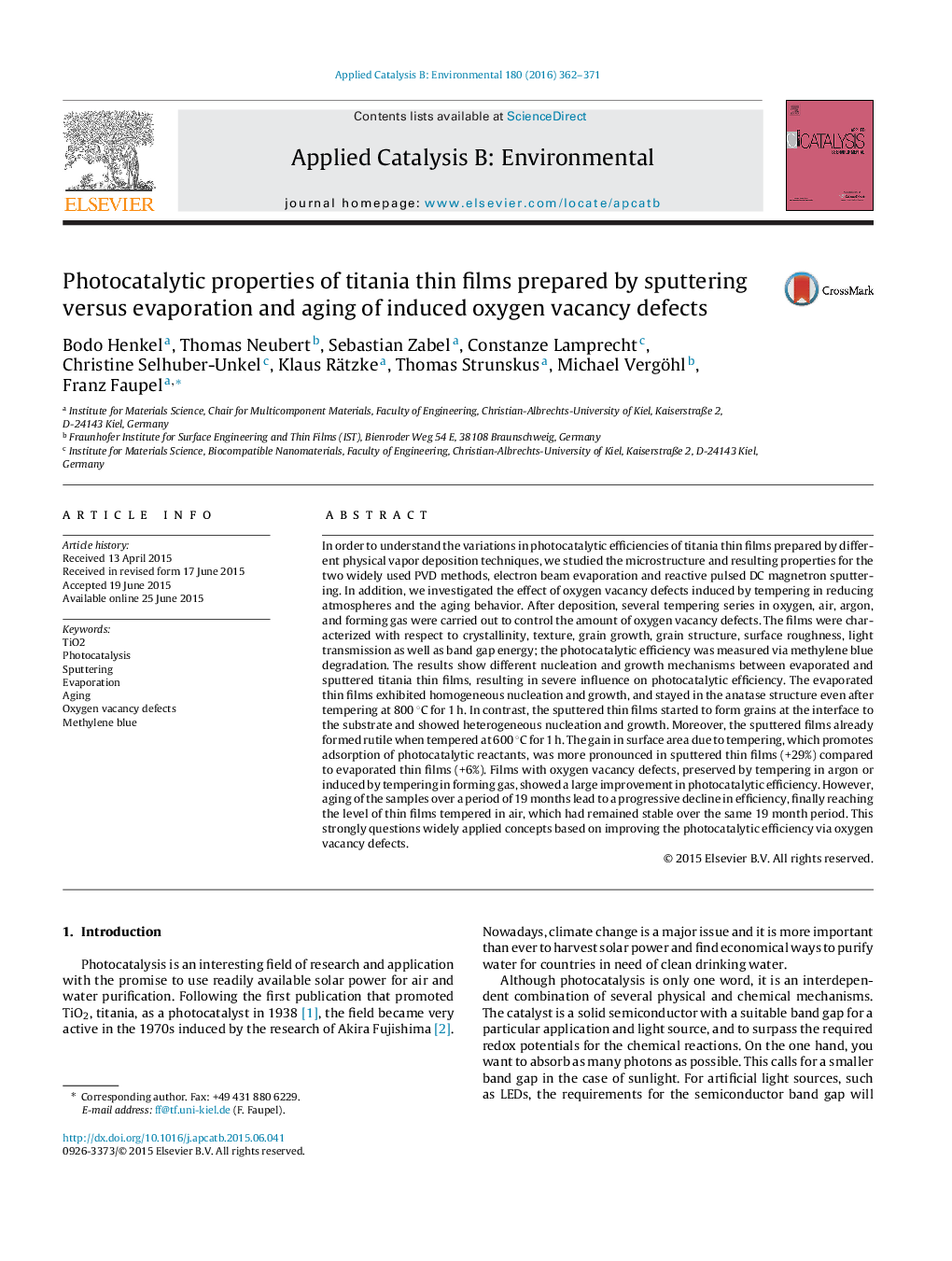| کد مقاله | کد نشریه | سال انتشار | مقاله انگلیسی | نسخه تمام متن |
|---|---|---|---|---|
| 45253 | 46407 | 2016 | 10 صفحه PDF | دانلود رایگان |

• Reasons for different photocatalytic efficiencies of sputtered and evaporated TiO2 thin films.
• These two thin film types show principally different crystallization behavior during thermal treatment.
• Microstructural differences lead to different photocatalytic efficiencies.
• Annealing under reducing atmosphere leads to improved photocatalytic efficiency.
• The aging influence on the photocatalytic efficiency of TiO2 layers with induced oxygen vacancies is shown.
In order to understand the variations in photocatalytic efficiencies of titania thin films prepared by different physical vapor deposition techniques, we studied the microstructure and resulting properties for the two widely used PVD methods, electron beam evaporation and reactive pulsed DC magnetron sputtering. In addition, we investigated the effect of oxygen vacancy defects induced by tempering in reducing atmospheres and the aging behavior. After deposition, several tempering series in oxygen, air, argon, and forming gas were carried out to control the amount of oxygen vacancy defects. The films were characterized with respect to crystallinity, texture, grain growth, grain structure, surface roughness, light transmission as well as band gap energy; the photocatalytic efficiency was measured via methylene blue degradation. The results show different nucleation and growth mechanisms between evaporated and sputtered titania thin films, resulting in severe influence on photocatalytic efficiency. The evaporated thin films exhibited homogeneous nucleation and growth, and stayed in the anatase structure even after tempering at 800 °C for 1 h. In contrast, the sputtered thin films started to form grains at the interface to the substrate and showed heterogeneous nucleation and growth. Moreover, the sputtered films already formed rutile when tempered at 600 °C for 1 h. The gain in surface area due to tempering, which promotes adsorption of photocatalytic reactants, was more pronounced in sputtered thin films (+29%) compared to evaporated thin films (+6%). Films with oxygen vacancy defects, preserved by tempering in argon or induced by tempering in forming gas, showed a large improvement in photocatalytic efficiency. However, aging of the samples over a period of 19 months lead to a progressive decline in efficiency, finally reaching the level of thin films tempered in air, which had remained stable over the same 19 month period. This strongly questions widely applied concepts based on improving the photocatalytic efficiency via oxygen vacancy defects.
Figure optionsDownload as PowerPoint slide
Journal: Applied Catalysis B: Environmental - Volume 180, January 2016, Pages 362–371